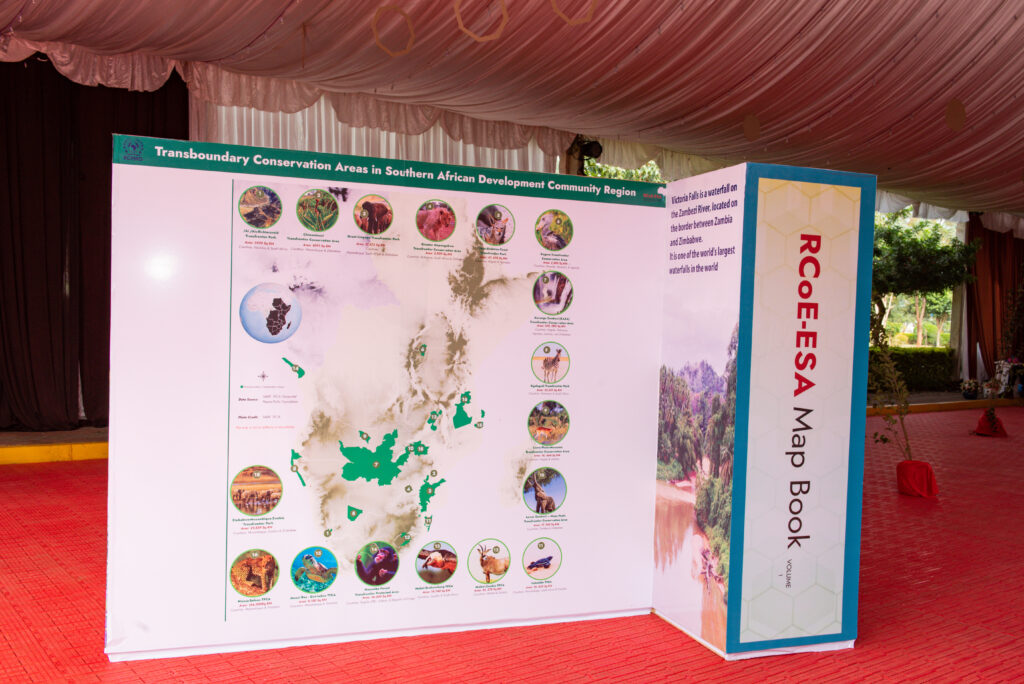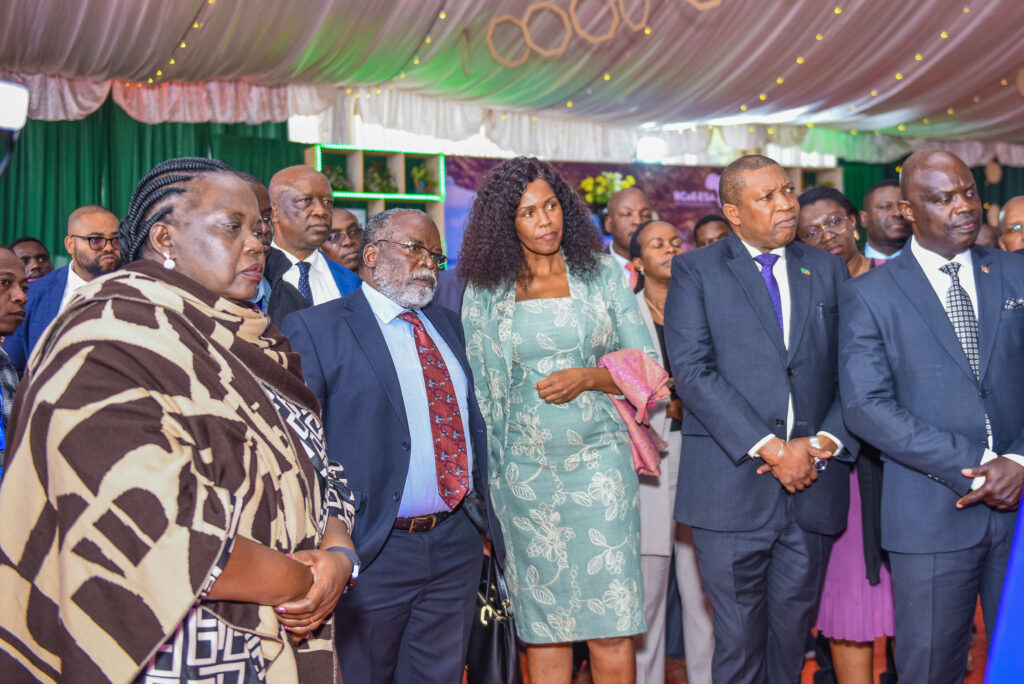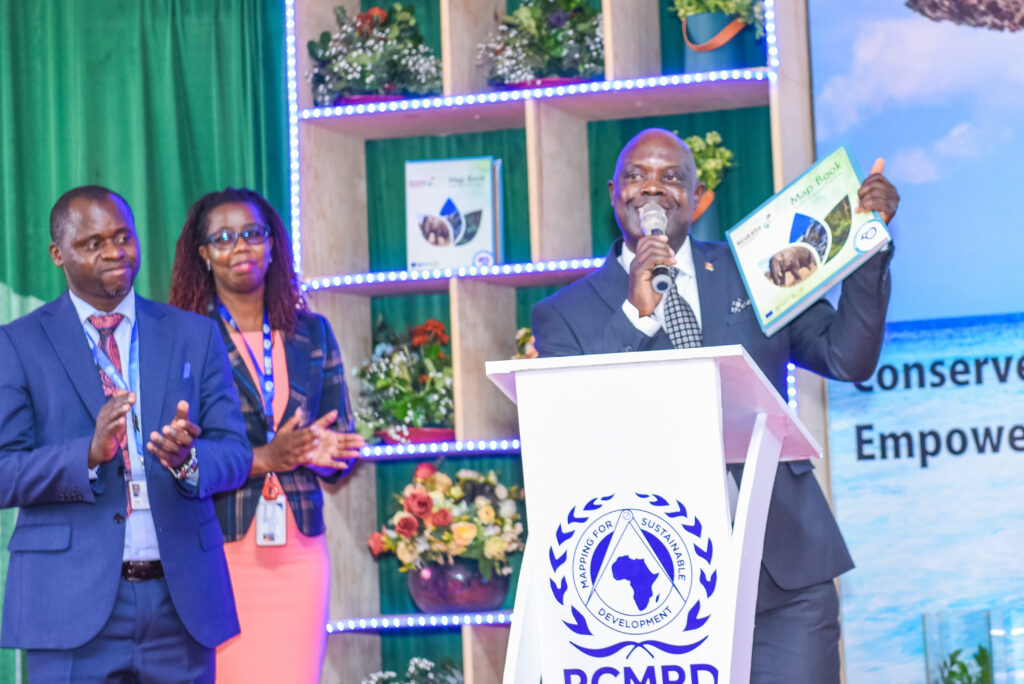Nairobi, Kenya. The Regional Centre of Excellence for Biodiversity, Forests, and Seascape Ecosystems Management in Eastern and Southern Africa (RCoE-ESA) has unveiled a transformative tool to support conservation efforts across the continent.
The RCoE-ESA Map Book was officially launched on June 16, 2025 during the 50th anniversary celebrations of the Regional Centre for Mapping of Resources for Development (RCMRD), marking a significant milestone in the use of geospatial science for sustainable development.
The launch, officiated by Malawi’s Minister of Lands, Deus Gumba, introduces a data-rich resource aimed at guiding evidence-based conservation decisions across 24 countries in Eastern and Southern Africa.
The Map Book provides high-resolution maps, spatial data, and thematic analyses that spotlight biodiversity hotspots, assess protected and conserved areas, and highlight transboundary conservation corridors.

“The Map Book is more than just a reference document. It is a vital call to action for conservation practitioners, researchers, development partners, and policymakers alike,” said Dr Emmanuel Nkurunziza, Director General of RCMRD.
“It enables us to restore and manage biodiversity-rich ecosystems such as forests, wetlands, and marine environments through targeted, data-driven strategies.”
As environmental threats such as climate change, habitat degradation, and unsustainable land use continue to escalate, the need for scientifically grounded planning tools has become increasingly urgent. The RCoE-ESA Map Book addresses this by identifying critical conservation gaps and offering actionable insights for policy development and land-use planning.
A particularly timely feature of the Map Book is its tracking of progress toward Target 3 of the Global Biodiversity Framework — the global goal of conserving at least 30 percent of the world’s land and sea by 2030.

By mapping areas designated as Protected Areas (PAs) and Other Effective Area-Based Conservation Measures (OECMs), the publication allows countries to assess their advancements and challenges in achieving this global target.
The launch coincides with another key event at RCMRD: the Integrated Management Effectiveness Tool (IMET) Sensitization Training Workshop. IMET is a digital platform that helps assess and enhance the effectiveness of conservation area management.
The training is equipping stakeholders with the tools and skills to ensure long-term ecosystem sustainability and better delivery of ecosystem services to local communities.
RCMRD, which is celebrating five decades of service to more than 500 million people in the region, has been a pioneer in advancing geospatial science, Earth observation, and capacity development in Africa. The RCoE-ESA Map Book is the latest testament to its commitment to innovative solutions for sustainable development.

“Indeed, it has been a journey of five decades advancing geospatial excellence for sustainable development. This Map Book is a testament to that legacy,” Dr Nkurunziza added.
As the region grapples with urgent environmental challenges, the Map Book stands out as a beacon for collaborative, data-informed action to safeguard the continent’s rich and diverse ecosystems.



I very delighted to find this site on bing, just what I was looking for : D besides saved to fav.